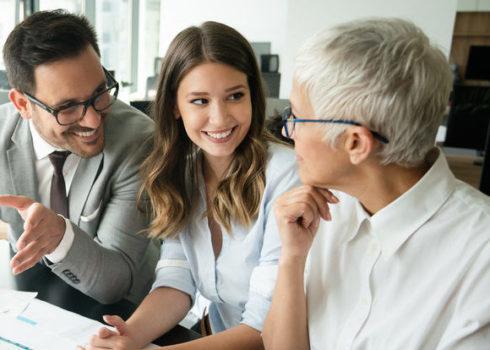At a Glance
Resourcing for projects carries multiple challenges. With the added pressure that making a wrong decision could impact projects. This article details our ‘Return on Effort’ approach, which can enable organizations to make decisions on deploying resources by quantifying the incremental value generated by the efforts put into the project.”
Estimating return on effort brings objectivity and consistency to decision making
A systematic estimating process enables colleagues, supervisors and sourcing departments to better understand requirements, effort and benefits. Similarly, service providers and clients can then better prioritize and evaluate project impact.
In most cases the focus is put on assessing the cost, but not the effort
As crucial as it sounds, many parties have only just started to try to get a better grasp on this. Some research has been done in the nonprofit space but has little application to the projects with which we, at a-connect, typically deal. Academic research papers measuring project outcomes are often very complex or too simplistic. Applied efforts in consulting are measured mostly in the IT field. Interestingly enough, trials applied to Independent Consultants and flexible consulting models speak about concepts such as Return on Expertise and Return on Labor. All in all, the focus is put on assessing the cost, but not the effort. Only a few qualitative indicators of the full impact are available.
We have developed an indicator on the return on effort (RoE™)
The RoE™can fulfill short and long-term value creation objectives. Let’s explore how it works.
1. Laying the ground
We have created this simple formula, which includes all relevant components.
Let’s break this formula down further.
2. Estimating the Return on Effort (RoE™)
The total incremental returns must be taken into consideration. This should go beyond the obvious and consider measures like positive stakeholder impact due to early completion or over-achievement in a project.
Equally important are the total project costs. Aggregating the external and internal resources and one-off implementation costs are straightforward. What becomes more difficult is measuring opportunity costs of deploying internal resources or negative stakeholder impact due to:
- Project delays.
- Lower productivity of people.
- Changes in organizational structure.
3. Adjust for risk, strategic fit, and skills transfer
Every project carries risk(s). So when measuring the return on a project, it’s important to consider them all. Of course, you should assess the likelihood of success, but will it support the achievement of the company’s overall strategic goals? This is very important if the project is transformational and requires realigning the organization to its strategic goals.
Skills transfer and development multiply impact. Especially if the project team benefits from the learning experience. This impact grows if the acquired skills are highly relevant for future projects, daily tasks, or personal development. So, think carefully about which internal resources and external partners are assigned to a project.
When working with external partners, remember that their delivery model impacts the power of the skills transfer multiplier. Generally, the closer internal and external resources work together, the bigger the benefit. This is further multiplied by how hands-on and how much previous experiences they all bring. For a-connect, knowledge and skill transfer have always been close to our heart, and a key element of our value proposition to clients.
4. What inputs are needed to calculate RoE™?
We recommend first asking these questions about the project:
- How does it fit with your overall strategy?
- What impact are you expecting to create?
- Which resources are needed to complete?
- What is the opportunity cost of internal resources?
- What inherent risk is there?
- What’s the likelihood of success?
- Can the project team benefit from the skills and knowledge they’ll acquire?
Answering these should become standard when considering kicking off any initiative. Its application will establish a baseline and applying it systematically will result in a benchmark. Producing quantitative and objective “indicators” of the value generated by the efforts put into a project could be widely applicable within companies and different kinds of service providers.
We’ve been working on improving the fundamentals, as well as testing RoE the concept with our clients. We are convinced the discussion around the elements in the RoE will help guide us and our clients to allocate different kinds of resources and maximize the value of project portfolios. And as a metric, it tells a very useful story that can help fuel growth.
About the author
Sara Enriquez joined our Client Service team in 2012 and holds a dual role as a Client Service Partner focusing on Life Sciences clients and is also part of our Leadership team focusing on strategy and innovation. Sara made her career to date turning problems into projects and projects into new opportunities. She started her journey in South America, focused her studies in Microeconomics and Game Theory, trained her consulting skills at McKinsey, and gained “boots on the ground” experience in diverse strategy and business development roles as part of the management team of Ferrovial. Three continents and countless projects later, Sara works with a-connect’s clients and Independent Consultants across industries with a focus on Life Sciences.














